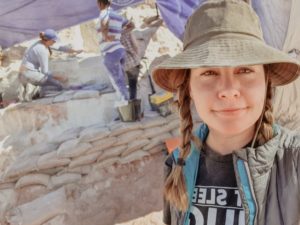
Researchers have traveled back in time to discover Homo sapiens did indeed live and survive in the Kalahari Desert more than 20,000 years ago.

Griffith University archaeologist Dr Jayne Wilkins said the general assumption is that the Kalahari is a harsh environment not suitable for early human survival, however, they did indeed live there and thrive.
“Our research shows during some periods in the past the desert was lush and much wetter than today,” Dr Wilkins said.
“Humans could thrive in these wet conditions. We also found out that by 20,000 years ago, humans were living in the Kalahari during the dry conditions providing us with an insight into how climate change impacted human evolution.
“This research has been years in the making as I’ve been travelling to the Kalahari since 2015.
“Our main site of exploration is Ga-Mohana Hill in the southern Kalahari in South Africa, a site that has spiritual significance for the local communities.
“I collaborate with a team from the University of Cape Town who studied the tufa deposits which are springs, waterfalls or ponds that have turned into rock.
“Water precipitates out and leaves behind calcium carbonate which the team was able to drill into and date the rock. These dates tell us when it was wetter in the past.”

Dr Wilkins leads the archaeological investigations of Ga-Mohana Hill and discovered some of the world’s earliest evidence of innovative technological behaviours.
“We found a lot of stone tools and the remnants of bones from a meal they would have consumed,” she said.
“A significant find though was calcite crystals, clear crystal cubes that don’t have a functional value but were probably collected for sentimental reasons like a stamp collector, or perhaps for ritual reasons.
“Our research shows it wasn’t just about surviving for the Homo sapiens in the Kalahari Desert, but they thrived with advanced knowledge, systems and technologies to able to access the resources they needed to survive in dry conditions.”








